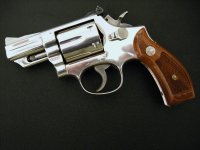For factory loads if you want to shoot .357 at the range, stay with 158gr bullets.
Better yet, do as I do and get into the wonderful hobby of reloading.
I've got a 19 and two 66's and they are a ton of fun for range blasting. But I like to baby them, so while I may stoke them with magnum 125gr for SD carry, all my range time with them is using my own reloaded .357 brass where I use the low end of the load tables which I might arbitrarily assume is about the same as a "+P" .38Spl, a load that the K-frames shoot with little recoil and really good accuracy.
A Rockchucker and basic accessories, and you're in the reloading hobby, and your K-frames will last forever.




